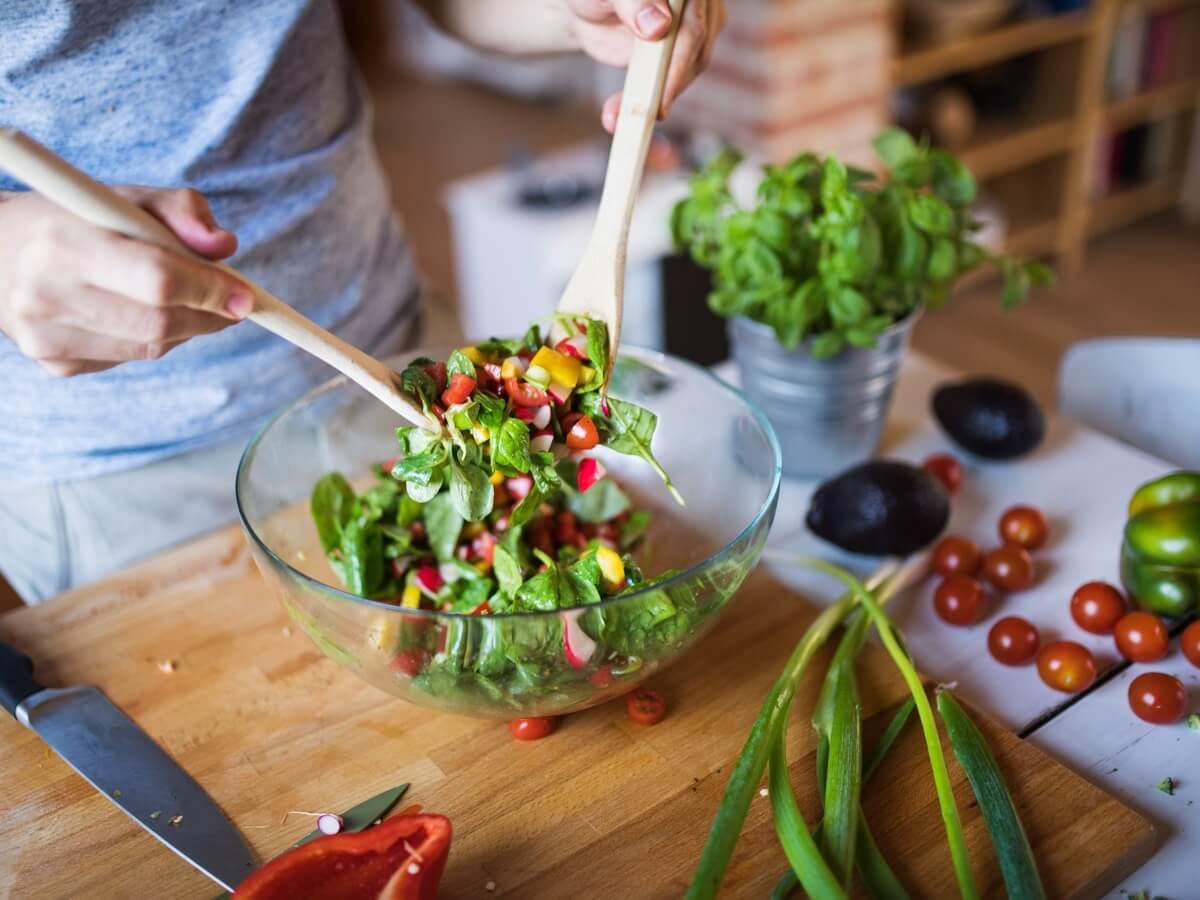Ever wonder why the salads you make at home don't taste quite as good as the ones you order in restaurants? Sometimes the taste difference is due to the flavorful but not-so-good-for-you add-ins restaurants include in their salads. Or it may just be that restaurants have a few tricks up their sleeves for creating salads that make your taste buds s ing.
ing.
Finding ways to elevate the taste of your salads will not only save you tons of money compared to eating restaurant salads, but you'll have more control over the calories and healthfulness of what's on your plate. After all, have you ever checked the calories of some restaurant salads? They can be more than a hamburger and fries!
Here are 10 tips to make your salad look and taste like a culinary masterpiece (while still being healthy!):
- Use the freshest ingredients. Pre-bagged salads may make life easier, but they taste kind of blah. Instead, buy seasonal produce from your local farmer's market and build your salads based on what looks best. You'll not only taste the difference but will add loads of nutrients to your salad.
- Choose the right lettuce. The darker the greens, the more nutrients they have. Varying your greens will also give you different flavor profiles. Try romaine, baby spinach, kale or arugula. Don't waste space in your salad bowl with iceberg that lacks taste and nutrients.
- Add some crunch. Some crunchy toppings can add loads of fat, sodium and calories, like croutons, tortilla strips and crumbled bacon. Instead, add crunch with diced or shredded veggies, edamame, roasted chickpeas or a few nuts.
- Add color. You eat with your eyes as much as your stomach, so make your salad a work of art. Choose produce from across the rainbow—carrots, peppers, radishes, beets, pomegranate seeds, tomatoes, mangoes, blueberries and more add vibrant pops of color.
- Include protein. Give your salad some staying power by filling it with animal or plant-based protein. Grilled chicken, turkey, tuna, salmon, hard-boiled eggs, beans, tofu, sunflower seeds, walnuts or almonds are protein-rich additions.
- Give it some bulk. Don't feel full on just veggies alone? Add some high-fiber whole grains, like quinoa, farro, barley or brown rice. Healthy fats, including avocado, nuts and seeds, also help fill you up.
- Mix sweet with savory. The sweetness of fruit complements a savory base of greens, veggies, cheese or nuts. Apples, pears, clementines, strawberries, raspberries, blueberries or blackberries also add a pop of color and healthy vitamins and fiber.
- Add herbs. Fresh herbs, like basil, parsley, chives, cilantro, mint or dill, add flavor to salads and dressings. For a spicy kick, sprinkle some red pepper flakes.
- Make your own dressing. Bottled dressings are often lacking in taste and many contain artificial ingredients. Instead, make your own dressing with restaurant-quality flavor. Start with a base of vinegar and some extra virgin olive oil or use Greek yogurt for a creamy dressing. Add lemon or lime juice, mustard, herbs or a touch of honey for sweetness.
- Toss salad in a large bowl. This helps all those delicious flavors meld together well so your salad is full of taste from the first bite to the last.
It's easy to transform your salads from lackluster to taste sensations. In doing so, you'll fuel your body with lots of nutrients and healthy fiber. By making salads at home instead of eating them out, you can also save loads of money and calories. That's a win-win!
Copyright 2023 © Baldwin Publishing, Inc. Health eCooks™ is a designated trademark of Baldwin Publishing, Inc. Cook eKitchen™ is a designated trademark of Baldwin Publishing, Inc. Any duplication or distribution of the information contained herein without the express approval of Baldwin Publishing, Inc. is strictly prohibited.
Date Last Reviewed: May 15, 2023
Editorial Review: Andrea Cohen, Editorial Director, Baldwin Publishing, Inc. Contact Editor
Medical Review: Jane Schwartz, RDN, CLT
Learn more about Baldwin Publishing Inc. editorial policy, privacy policy, ADA compliance and sponsorship policy.
No information provided by Baldwin Publishing, Inc. in any article is a substitute for medical advice or treatment for any medical condition. Baldwin Publishing, Inc. strongly suggests that you use this information in consultation with your doctor or other health professional. Use or viewing of any Baldwin Publishing, Inc. article signifies your understanding and agreement to the disclaimer and acceptance of these terms of use.
